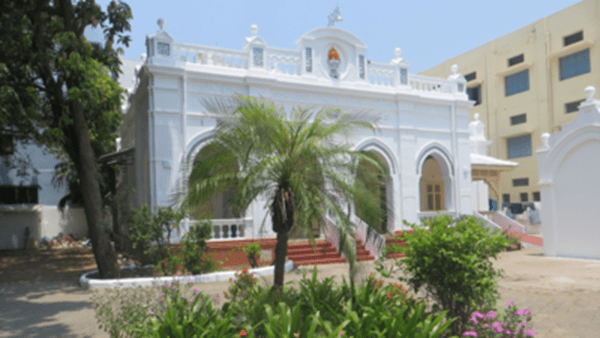Zarine Mistry, a resident of Sterling Road, shares insights into the Parsi community in Chennai, highlighting Anjuman Baug’s significance. Additionally, the article mentions Delkhush Delicacies, operated by Mahiyar and Zavera Shroff, known for their popular Parsi dishes like Parsi pulao.
Article by Debasmita Ghosh | TNN
CHENNAI: Now a Sterling Road resident, Zarine Mistry was born in a humble cottage at the Parsi Anjuman Baug 12 km away and grew up in the Gulmohar-lined bustling avenues of Royapuram. “My dad came to Chennai from Lahore in 1934 as a professor of anatomy at Madras Medical College. As kids, we walked to the beach and sat on the cement stands. Then the Jawahar Port was developed, and everything changed,” says Mistry, a former secretary of the Madras Parsi Association and Parsi history expert.The 70-year-old looks forward to revisiting her childhood bylanes to celebrate the 114th anniversary of Chennai’s Fire Temple, Jal Phiroj Clubwala Dar-e-Mehr, next month.
The Parsi community in Chennai is small, with only 170 to 200 members. Still, they are spread across the city, including Harrington Road, Sterling Road, Spurtank Road, Anna Nagar, T Nagar, and their main hub, Royapuram. Despite their small numbers, they have made their presence felt with their unique cultural identity, leaving an indelible mark on the cityscape.
The earliest Parsi settlers in Chennai came from Coorg, seeking refuge during Tipu Sultan’s attempts to annex the region. Around 1795, a group of Parsis arrived in Chennai holding a portrait of the Raja of Coorg, Lingaraja (who had supported them), presenting it to the governor of Fort St. George (it is in the Fort Museum now), marking the community’s beginnings in the city. They acquired land in Royapuram and established Anjuman Baug.
The 72,000sqft baug (meaning garden), lined with mango trees and peepal trees, stretches from West Mada Street to Arathoon Road. From West Mada Street, you see small buildings, the grand red heritage bungalow, and the original dharmshala. Next to it is the Banglee, where prayers for the departed are held before moving them to the cemetery. The newly-renovated, pink dharmshala with air-conditioned rooms is on the right, and in the backyard is the kitchen and home of Chennai’s only Parsi caterers, Mahiyar and Zavera Shroff.
“The cemetery has two sections: an older one and a newer one,” says Tehnaz Bahadurji, a businesswoman. “We were using the newer section, but it became full. We had to clear old graves in the older section to create a wall of remembrance. Now, we’re using the older section again.”
The two-story red heritage Dharmshala, with elements of old Madras architecture, was gifted by the Phiroj Clubwala family in 1908, making it older than the Fire Temple. Several members of the community live here.
Mistry and Tehnaz agree that while they restore some properties for Parsi families moving into the city, renovating the old Dharmshala is a massive task. “A mere whitewashing won’t suffice. Restoring it could cost crores of rupees,” says Mistry. “We have several properties around, but maintaining them is challenging.”
A few metres from Anjuman Baug is the famous Parsi Club with two banquet halls where the community gathers monthly and on festive days. “It was an old colonial building called Greenfields, with a patio and verandahs,” says Mistry. “Restoring it was difficult and funds were scarce, so we built a modern structure. Now we have the Phiroj Clubwala Memorial Hall and the Pavilion, the city’s first indoor badminton court. We converted it into a dining hall and rented it out for marriages to generate income.”
“When we celebrated the Fire Temple’s 100th year 14 years ago, we got donations to aircondition the hall. Many Muslims in the area rent our halls for marriages, believing they bring good luck. Women used to sit in the non-airconditioned badminton hall, so we collected money and refurbished it with donations and our funds,” says Tehnaz.
With every passing the demographic landscape of Parsis residing in Chennai has seen a gradual decline. There’s almost a near absence of youngsters, says Darius Bahadurji, president of the Madras Parsi Zarthosti Anjuman. “Almost 75% of us are above 50. Among our close group of friends, nobody’s child is here.”
But still, there is a strong sense of solidarity, says Tehnaz. “Being a small community, we look after our own.”
Cooking up a dhansak storm
Fancy some akuri or lip-smacking ravo sev? A catering house in North Chennai has been quietly rustling up these traditional Parsi dishes of scrambled eggs, semolina pudding, and more for a quarter of a century from its premises at Parsi Anjuman Baug.
Delkhush Delicacies, run by Mahiyar and Zavera Shroff, opened doors in 1998, serving not just Parsi food but biriyani too.
“We knew biryani was popular in Chennai. There was demand for Parsi cuisine among our community of 200 people, but we had to balance our business with something we knew would sell,” says Zavera.
It all began when Mahiyar moved to Chennai from Nagpur in 1986 for a sales job at Tata’s Empress Mills. That year, he married Chennai-born Zavera. A few months later, the mill shut down. “We started a textile business but it failed,” says Mahiyar, leading the couple to switch to catering. They started by catering birthday parties, but today, Delkhush Delicacies is a go-to for Navroz, weddings, and club parties.
Parsi pulao is our best-seller, say the couple, now in their 60s. “We follow Bhicoo Manekshaw’s recipe, India’s first Cordon Bleu-trained chef (incidentally, Indira Gandhi loved her food).” Other favourites include sali chicken, sweet and sour fish patia, and dhansak, which is mutton cooked in a mix of dals with dhansak masala and sambhar powder.
Their turnover has crossed ₹1.25 crore. “Our business grew through word of mouth,” says Mahiyar. “We just focus on the food.”

